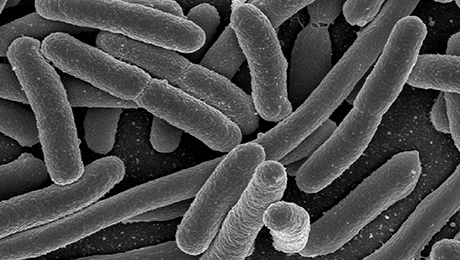A recent discovery from a George Washington University researcher could help doctors identify, stop or prevent a particularly malignant strain of Escherichia coli before it turns into a lethal infection.
In the past decade, a single strain of Escherichia coli, or E. coli, has become the main cause of bacterial infections in women and the elderly by invading the bladder and kidneys, according to research from Lance Price, professor of environmental and occupational health in the School of Public Health and Health Services (SPHHS).
Besides becoming more resistant to antibiotics, the strain H30-Rx gained an unprecedented ability to spread from the urinary tract to the blood, leading to the most lethal form of bacterial infections—sepsis—and posing a looming threat to the more than 10 million Americans who annually suffer from urinary tract infections (UTIs).
Dr. Price’s study, published Tuesday in the scientific magazine mBio, helps trace the evolutionary history of this superbug—an antibiotic resistant organism— and could lead to the development of a preventive vaccine.
Previous research suggested that the ST131 group of E. coli had independently gained resistance to antibiotics through separate genetic events. The ST131 group had been identified as a major source of superbugs among UTI bacteria. If true, the existence of many different resilient strains would prove a formidable threat with multiple ways of evading the immune system and medical treatment.
Using whole-genome sequencing, Dr. Price and his colleagues—James R. Johnson of the Veterans Affairs Medical Center and the University of Minnesota, and Evgeni V. Sokurenko of the University of Washington School of Medicine—analyzed the genomes of E. coli samples from patients and animals in five countries over 44 years. They then created a family tree tracing how the superbug clones emerged as the result of discrete genetic events.
To the researchers’ surprise, they discovered that the ST131 strains represented genetic clones abruptly evolved from a single strain of E. coli.
By gaining mutations in two genes, a strain called H30 gave rise more than a decade ago to the H30-R clone, which became fully resistant to the then-wonder drug known as Cipro. Soon after, a new clone evolved from H30-R called H30-Rx, which is resistant to several powerful antibiotics.
“Astoundingly, we found that all of the resistance could be traced back to a single ancestor,” Dr. Price said. “Our research shows this superbug then took off, and now causes lots of drug-resistant infections.”
H30-Rx, appears to be much more adept than other E. coli at ascending from the bladder to the kidneys and then into the bloodstream, where it can be lethal, and the study suggests that H30-Rx may be responsible for 1.5 million UTIs and tens of thousands of deaths annually in the United States.
Dr. Price’s research suggests that, by focusing on H30-Rx, researchers might find a vaccine that could prevent many infections. Vaccines for highly resistant strains of superbugs could protect people from ever getting sick in the first place.


